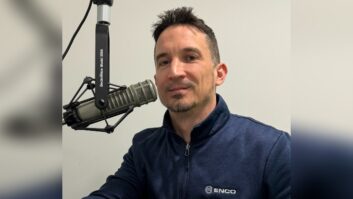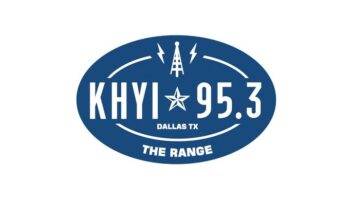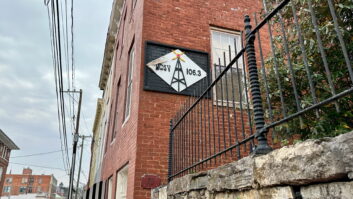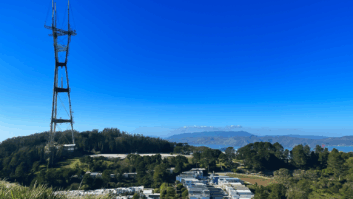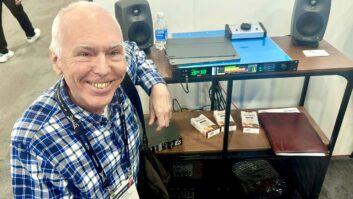Northeast Indiana Public Radio Uses Multicast to Extend Its Footprint
Already adept at programming and promoting two formats, Northeast Indiana Public Radio had a leg up when the digital revolution arrived.
Today, the community broadcaster is airing three formats – news, classical and jazz, which airs solely on a digital channel. It is multicasting HD2 and HD3 on one of its main frequencies and is reveling in the chance to increase its audience and influence in Indiana’s second-largest city.
Fort Wayne is one of a half-dozen markets nationwide where public radio outlets are airing three distinct digital formats, according to technology executives at National Public Radio.
“On the commercial side, the emphasis on digital radio has been on revenue,” General Manager Bruce Haines said. “On the public radio side, it’s more about public service. To be able to say to a station that you can add a signal, it’s like getting a free kitten. We’ve all been given this gift of technology.”
Like many public broadcasters in smaller markets – the population of metropolitan Fort Wayne is just over 500,000 – Northeast Indiana Public Radio Inc., with an annual operating budget of about $1.2 million, often has tried to be all things to all people. NIPR’s mission statement is “to engage our community with content that enriches the human experience.” But the broadcaster also has a storied history of finding unusual and creative ways to serve its marketplace, even teaming with a local heating and air conditioning company to help bring another frequency to Fort Wayne.
NIPR holds the operating licenses for two stations; WBOI on 89.1 MHz airs NPR news and public affairs programming and is licensed to Fort Wayne, while WBNI at 91.3 offers classical music and is licensed to Orland, Ind. The latter has a translator airing on 88.7 in Fort Wayne.
The programming is shared with WBKE at 89.5, a station operated by Manchester College in North Manchester, Ind.
WBOI is the station with the strongest signal. It has gone HD Radio and now broadcasts all three formats.
Aspirations
The fate of public radio in Fort Wayne was very much in doubt as recently as 25 years ago, when WBNI was owned and operated by Indiana-Purdue University Fort Wayne. In the early 1980s, the school seriously considered closing down the radio operation to save money. A group of community-minded listeners, many from the local business and arts community, negotiated with the school and won the operating license for 88.7 MHz. It became a community licensee in March 1982, offering a diverse mix of programming including shows from National Public Radio. Unpaid volunteers hosted shows devoted to classical music and jazz, and they still do.
Haines arrived in 1987, fresh from a gig at a commercial country station in Muncie, Ind.
“When I arrived, I heard a lot of aspirational language: ‘If only we could have two stations.’ We had the programming. We were paying for things we weren’t using. But there were no more chunks of 50,000-watt audio space available in Fort Wayne,” he said.
But there were translator signals in the market, though they couldn’t originate programming. And in tiny Orland, about 40 miles north near the border of Indiana and Michigan, there was a frequency available – all of 2,000 watts broadcasting from a 300-foot tower.
In 2002, the station worked with a local heating and air conditioning company that was looking for a way to expand its two-way radio coverage. The public broadcaster helped the firm invest in equipment that expanded the company’s bandwidth in exchange for access to a microwave signal, which would carry programming from Fort Wayne to Orland, where it aired on WBNI. The signal from Orland, in turn, was retransmitted to the translator at 88.7 FM in Fort Wayne to make it easier for local residents to receive the signal.
“We had to go out of town to come back in again,” Haines joked.
When digital radio became a possibility, Haines said, the thinking quickly turned to using WBOI as the platform for the new technology on 89.1. It would allow the classical music from WBNI to be simulcast on the HD2 channel while having enough bandwidth left to offer a jazz outlet on HD3.
Northeast Indiana Public Radio successfully applied for a Corporation for Public Broadcasting grant, which covered much of the cost of equipment. The station utilizes a Broadcast Electronics AudioVault system to program the musical outlets and is running the digital signal via a BE IDi 20 HD Radio Importer and FSi 10 HD Radio Signal Generator. The station uses a BE FMi 703 digital transmitter.
Chief Engineer Mike Peters said there have been some issues with coverage area, noting that the digital signal doesn’t reach as widely as the analog; but overall the move to digital has been fairly smooth. He said he has found some flaws with the hardware, but added, “It’s all first-generation equipment and it’s getting better. It’s not a bad thing, just something new to deal with.”
Overall, Peters said, “The ability to have three programming sources is a wonderful tool.”
Who can hear it
Like his cousins on the commercial side, Haines is well aware that most people in Fort Wayne can’t really enjoy the new digital signals.
He says that when the station bought 10 Boston Acoustics digital receivers, staffers joked they now had a cume of 10. For now, the news and classical formats are being streamed on the station’s Web site ( www.nipr.fm ) with the jazz format to begin streaming sometime this summer.
“We need to do some marketing,” Haines said. “We need to be the guest speaker at the Rotary Club. Marketing is viral. We do have a Web page. We do announcements on the air. People are starting to understand.
“We’ll wear them down, like water on rocks. A lot of this is mission work right now.”
Once more listeners have access to digital, Haines sees a much larger pool of potential donors.
“It will be a tremendous asset,” he said. “We’re looking at targeted e-mails. As we get more clever, we can adapt e-mail messages that are format- and station-specific. We’ll have a lot of opportunities.”
Meanwhile, Haines sees a time when Fort Wayne will add a fourth signal, perhaps a Spanish-language outlet for the growing number of Hispanic immigrants in the region.
For now, fans of the station seem to be taking the long view, aware that the digital formats will reach a miniscule audience for the next few years.
“At this point, it’s only the real audiophile who knows about digital,” said Marie Bailey-Greene, chairman of the Northeast Indiana Public Radio Community Advisory Board. “Many people will keep their radios and their tuners until they break, or until they’re no longer satisfied. But we’re all thrilled. … This makes the station stronger and we’re able to get a lot more of what we want to hear on the air.”
Tell RW about your digital and multicast plans. Write to [email protected].

